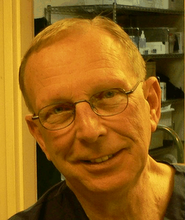 Galileo often receives credit for being the first of modern scientists because he tested Aristotle’s assertion that heavier weights fall faster than lighter ones. The story goes that Galileo dropped differing weights from the Leaning Tower of Pisa, but truth is, he built inclined ramps, which were used to roll balls of differing weights. The inclines slowed the weights, allowing a more accurate timing. These experiments he documented, and are republished today in a volume by Stephen Hawking: The Illustrated On the Shoulders of Giants. Hawking reprints extracts from the works of Copernicus, Galileo, Kepler, Newton, and Einstein.
Galileo often receives credit for being the first of modern scientists because he tested Aristotle’s assertion that heavier weights fall faster than lighter ones. The story goes that Galileo dropped differing weights from the Leaning Tower of Pisa, but truth is, he built inclined ramps, which were used to roll balls of differing weights. The inclines slowed the weights, allowing a more accurate timing. These experiments he documented, and are republished today in a volume by Stephen Hawking: The Illustrated On the Shoulders of Giants. Hawking reprints extracts from the works of Copernicus, Galileo, Kepler, Newton, and Einstein. Should one be interested, I recommend obtaining the book from a library to determine if one really wants to own a copy, unless of course one is not concerned about the expense. The expense is moderate.
One giant missing from Hawkin’s collection may be William Gilbert. Gilbert, who preferred the French pronunciation of his name, was physician to Queen Elizabeth I. In his spare time, which he seems to have had an abundance, he experimented with magnets, even spending 5000 pounds for a lab in his home. Adjusted for inflation, that's in the neighborhood of 1-million dollars, which also explains why he might also have had the time, and certainly indicates his level of passion for his subject.
After twenty years of study, Gilbert published De Magnete, Magneticisque Corporibus, et de Magno Magnete Tellure (On the Magnet and Magnetic Bodies, and on the Great Magnet the Earth) in 1600. De Magnete, as it is most often called, served as the definitive work on magnetism for over 200 years; in fact, until 1820 when Faraday published on electromagnetism.
The pertinent quote comes from the first sentence of the preface: “Clearer proofs, in the discovery of secrets, and in the investigation of hidden causes of things, being afforded by trustworthy experiments and by demonstrated arguments, then by the probably guess and opinions of the ordinary professors of philosophy…”
The pertinent fact: Galileo had a copy. Galileo did take science a step further in pointing out and applying mathematics as the language of science. He wrote, "Philosophy is written in this grand book, the universe ... It is written in the language of mathematics, and its characters are triangles, circles, and other geometric figures; ...". For that reason, Hawking and Einstein give him credit as the father of modern science.
Today, the scientific method seems common sense, but in that day it was not so. The eye of mind was considered superior to the eye of flesh; the scientific method combines both. The most often published defense of Galileo’s observations of the moons of Jupiter was a logical comparison of the number of wandering objects in the sky to the number of openings in the human head. The heavenly objects could not exceed the openings, so none need look through Galileo’s telescope.
The eye of flesh was not needed. It proved an opening of a 400-year war between church and science. Both have lost a great deal in the struggle. A look at the concept of eyes might help. So shall we look, at both the eyes and the losses.


No comments:
Post a Comment